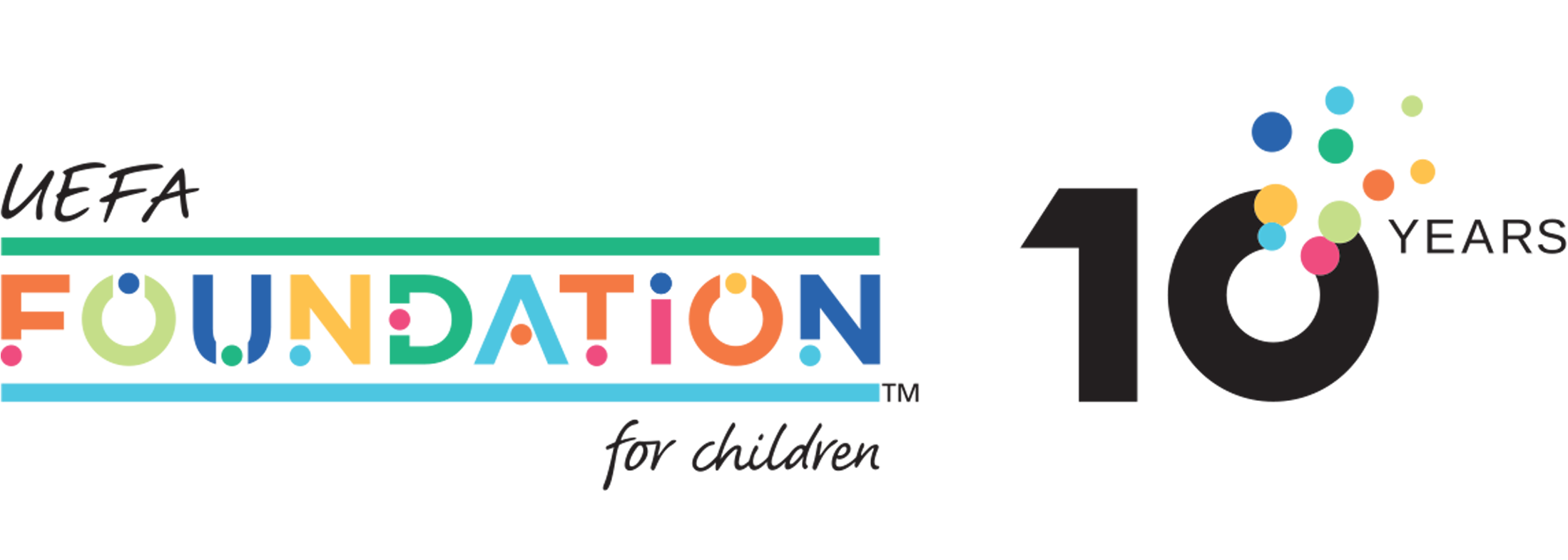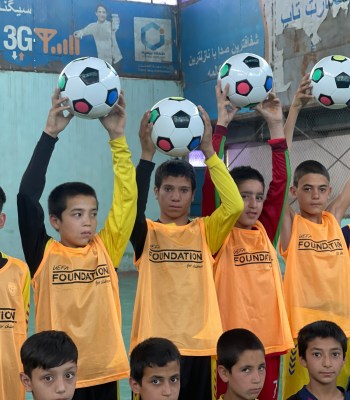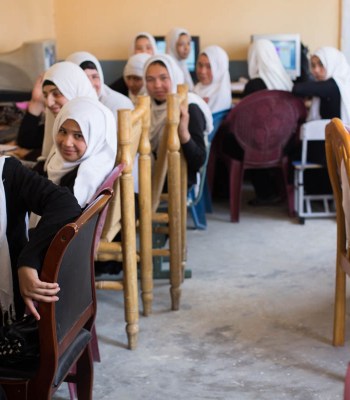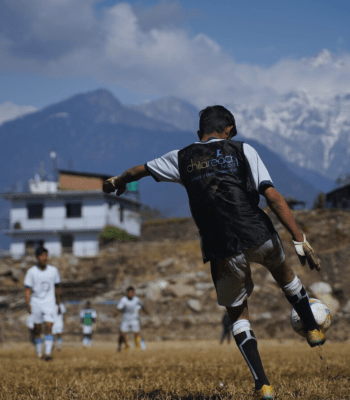Location and general information
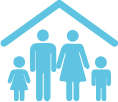 Conflict victims -
Conflict victims -  Personal development
Personal developmentContext
Over 4 million people in Iraq are in need of humanitarian assistance due to decades of conflict, widespread violence and displacement brought about by the self-proclaimed Islamic State (ISIS), endemic corruption, and ongoing political instability. According to the United Nations, 1.46 million people – 46% children under the age of 18 – are in acute need and face “critical problems related to their physical or mental wellbeing”. Although more than four million of the six million displaced by post-2014 conflict have been able to return to their areas of origin, families returning to conflict-affected areas face restricted access to basic services and security risks. They must contend with destroyed properties and critical infrastructure, as well as a lack of livelihood opportunities and financial resources. In some instances, this has led to secondary displacement.
Over 1.4 million people continue to be displaced, including hundreds of thousands of Ezidi (commonly referred to as Yazidi) survivors of the August 2014 genocide in Sinjar in their sixth year of displacement in the Duhok governorate of the Kurdistan Region of Iraq. At the end of 2019, the displaced population in Duhok stood at 319,584, the highest number in Iraq after Ninewa[1]. In addition, the governorate hosts upward of 80,000 Syrian refugees.[2] Fewer than half of Duhok’s internally displaced persons (IDPs) live in one of the seventeen IDP camps in the governorate.[3] The majority live in a variety of out-of-camp settings, ranging from rented accommodation to unfinished buildings and improvised dwellings, such as tents. Out-of-camp IDPs living in critical shelter are the most numerous vulnerable group.[4]
Although urban centres such as Duhok city and Zakho have a greater mix of ethnic and religious groups all fleeing conflict, the vast majority of remaining in-camp and out-of-camp IDPs in the Duhok governorate are Ezidi genocide survivors from the Sinjar district of Ninewa governorate. To date, Sharya town (also referred to as Sharya Collective) and the surrounding villages hold the largest out-of-camp population of IDPs (23,940) anywhere in Duhok governorate and one of the highest concentrations nationwide.[5]
[1] International Organization for Migration (IOM), Data Tracking Matrix DTM) Iraq, 31 December 2019, available at http://iraqdtm.iom.int.
[2] See Registered IDPs and Refugees in Kurdistan Region – Iraq for January 2019, available at http://jcc.gov.krd/contents/reports/19-02-2019/1550569468.Total%20No.%20IDPs%20%20Refugees%20for%20January%20in%20Kurdistan%20Region.pdf.
[3] See Kurdistan Region of Iraq, Ministry of Interior, Humanitarian Situational Report (SitRep), No. (2-20) for February 2020. Available at: http://jcc.gov.krd/contents/files/25-02-2020/1582612800.Humanitarian%20Situational%20Report%20(2-20)%20for%20February%20%20Kurdistan%20Region%20of%20Iraq.pdf.
[4] See UN-OCHA, Iraq Humanitarian Needs Overview (HNO) 2020, available at https://reliefweb.int/report/iraq/iraq-humanitarian-needs-overview-2020-november-2019-enarku
[5] International Organization for Migration (IOM), Data Tracking Matrix DTM) Iraq, 31 December 2019. Available at http://iraqdtm.iom.int/
Project content
In addition to its specific programme activities, the Jesuit Refugee Service Iraq adopts a multi-layered unified project model that promotes mutual understanding, social cohesion, and peace.
The various project modules and programmes will be complemented by the construction of a fenced multi-purpose sports ground and an annex with facilities and equipment. The complex will provide safe and supervised sports and recreational activities for children, teenagers and young adults from both IDP and host communities. It will promote integration and enable young people from this minority population to develop social skills, fundamental personal and community values, and team spirit. Sports will promote the physical and mental wellbeing of young people in protracted displacement, improve social cohesion, and facilitate conflict management. The sports ground will provide a much-needed facility and safe space to help them engage in positive, healthy activities and boost their overall wellbeing, as well as prevent self-harm linked to a sense of no future prospects.
The Jesuit Refugee Service Iraq’s educational activities, community outreach, and MHPSS services will dovetail with targeted awareness sessions and the thorough work of Jesuit Refugee Service family visitors. The sports ground and adjoining facilities represent a combined response to the need to heal the deeply embedded trauma in both the personal and collective psyche of the Ezidi population.
Objectives
- To enhance the psychosocial wellbeing of IDPs facing protracted displacement and improve their access to services, emergency assistance, and protection networks
- To support the right to education of children and young people in protracted displacement by providing access to quality education and psychosocial support
- To enhance the resilience of IDPs and improve knowledge through access to safe spaces, adult education, and awareness activities
Project activities
JRS projects and programmes in Sharya pay special attention to the well-being of traumatised child, teenage, and young adult genocide survivors as an at-risk category of IDPs. The proposed sports ground and ancillary facilities will enhance JRS’ capacity to serve the affected population proactively and holistically. Out-of-camp IDP children, teenagers, and young adults will benefit from access to a sports ground that better enables them to engage in positive and healthy recreational activities. JRS’ multi-layered intervention includes:
- Systematic support for genocide survivors in protracted displacement from the family visit teams; provision of core assistance, including cash-based and in-kind assistance, food and non-food items; specialised psychological and psychiatric care, as well as psychiatric medication, for the most vulnerable families and individuals
- A multi-sectoral education programme consisting of tutoring classes for 540 young people aged 12, 15, and 18 years during the school year; a summer programme for 140 children and teenagers, which includes drama, handicrafts, awareness sessions on relevant topics, and recreational activities; a licenced kindergarten for 220 children aged 4–5 years, in two shifts; training for teachers, including intensive training leading to a university diploma, as well as seminars on child safeguarding and psychological first aid
- Adult education and skills training courses that enhance IDPs’ income generation and employment opportunities and complementary protection activities to contribute to an improved sense of well-being; awareness sessions on topics such as health, hygiene, stress management, and parenting skills, which enable IDPs to better cope with the experience of protracted displacement
- A legal service to enable undocumented genocide survivors to obtain civil documentation
- A twice-weekly primary healthcare service hosted by the JRS Community Centre in Sharya in collaboration with a partner organisation
- Protection, mainstreamed in all programmes
- A range of transportation solutions to enable the population served to access the various services listed above
Expected results
The proposed multi-purpose sports ground and facilities build on best practice and lessons learned from an earlier JRS project in Ozal City, Kasnazan (2015–2018). The JRS Community Centre in Ozal City comprised a sports ground that became a magnet for hundreds of children and young people from over 2,000 displaced families of diverse ethnic, religious, and social backgrounds. During school hours, the sports ground was an integral part of an organised education programme (for children aged 4–18 years) that supplemented the scant delivery in the public schools for IDPs. Beyond that, the sports ground was a place of socialisation among people from different areas of origin and an effective instrument in peacebuilding and social cohesion.
The immediate and quantifiable beneficiaries of the proposed multi-purpose sports ground include:
- 220 preschool children (4–5 years old) during school hours
- 540 children in the youth education programme (aged 12, 15 and 18)
- 140 children in the three-month long summer programme
- Other children and young people participating in one-off or recurring activities laid on by JRS
At other times, the facility will be open (under supervision) to children, teenagers, and young adults from the IDP and host community. Users will be primarily out-of-camp IDPs and members of the host community.
The adjoining multi-purpose hall will host a range of activities, from indoor sports and fitness, to drama, film screenings, awareness workshops, and community-building events. It will constitute a safe and protective alcohol-free environment. The combination of indoor and outdoor areas will enable use during different weather conditions and – more importantly – will enable equal access for females and males.
